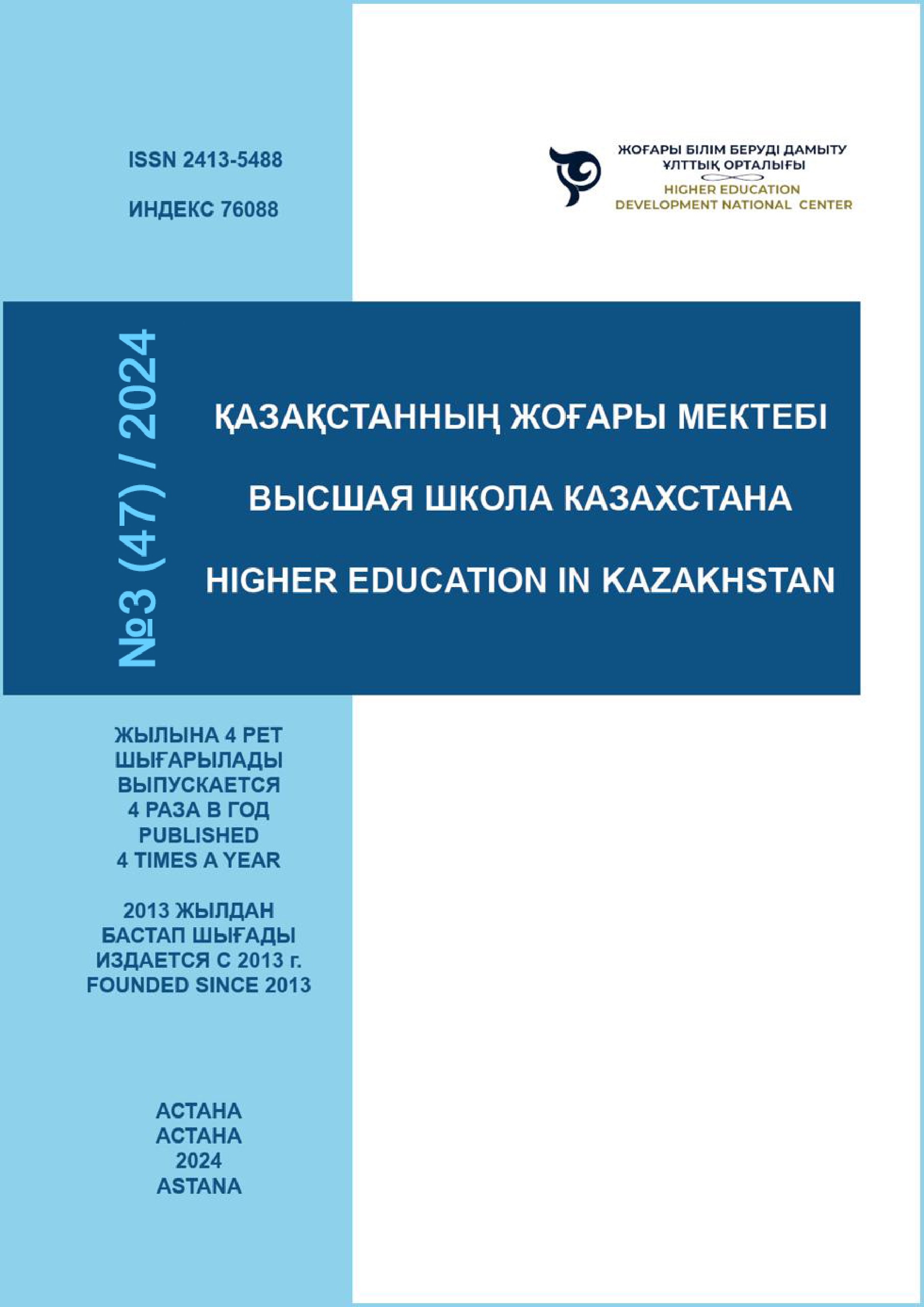WORK-INTEGRATED LEARNING: ANALYZING PARTICIPANT INTERACTION AND DEVELOPING PROFESSIONAL SKILLS OF STUDENTS
DOI:
https://doi.org/10.59787/2413-5488-2024-47-3-6-13Кілт сөздер:
work-integrated learning, university, student, industry organizations, stakeholdersАңдатпа
Work-integrated learning is considered to be an effective tool to help student develop the necessary skills to function in a work environment. Work-integrated learning combines university training and on-the-job training in industry organizations. Work-integrated learning allows students to have real working methods and professional qualities in the context of the work environment even before completing academic studies. This enables students to build confidence in their abilities, improve understanding of the work process, the nature of the skills required in the profession being mastered, as well as the development of employability skills. This is recognized as an important factor in the effective professional activity of university graduates in the workplace. The growing interest in work-integrated learning requires research and clarification of the processes of joint interaction of participants.
The article examines the process of joint interaction of the participants of work-integrated learning. For this purpose, a survey was carried out of direct participants in the process of work-integrated learning at the university - stakeholders (students, academic and industry representatives). The survey allowed to collect primary data on the experience of work-integrated learning and improved the understanding of the process of integration of academic and industry cooperation.
The survey of students was aimed at revealing their experience of on-the-job training. They were also presented with a list of skills that they were able to learn or improve as part of on-the-job training.
Questions for academic and industry representatives covered the following topics: the role of the preparatory phase in the transition from academic learning to on-the-job learning; teaching methods and ways to get feedback; integration of on-the-job learning experience into further university education; Improvement of the work-integrated learning system.
Әдебиеттер тізімі
Atkinson, L., Rizzetti, J., & Smith, S. (2005). Online resources for work integrated learning: A case study in re-usability and flexibility. In Proceedings of the 2005 conference of the Australian Society of Computers in Learning in Tertiary Education (ASCILITE). 37-45.
Billett, S. (2011). Curriculum and pedagogic bases for effectively integrating practice-based experiences. Sydney: Australian Learning and Teaching Council.
Coll, R. K., & Zegwaard, K. E. (2006). Perceptions of desirable graduate competencies for science and technology new graduates. Research in Science & Technological Education, 24(1), 29-58. DOI: https://doi.org/10.1080/02635140500485340
Doolan, M., Piggott, B., Chapman, S., & Rycroft, P. (2019). The Benefits and Challenges of Embedding Work Integrated Learning: A Case Study in a University Education Degree Program. Australian Journal of Teacher Education, 44(6). https://doi.org/10.14221/ajte.2018v44n6.6
Gamble, N., Patrick, C. J., & Peach, D. (2010). Internationalising work‐integrated learning: Creating global citizens to meet the economic crisis and the skills shortage. Higher Education Research & Development, 29(5), 535-546. DOI: https://doi.org/10.1080/07294360.2010.502287
Grantham, S., & Iachizzi, M. (2024). From classroom to career: a new approach to work-integrated learning in communication studies. Higher Education, Skills and Work-Based Learning, 14(4), 821-834. https://doi.org/10.1108/HESWBL-02-2024-0051
Ha, N. T. N. (2021). The involvement of industry professionals and barriers to involvement in work-integrated learning: the case of the profession-oriented higher education framework in Vietnam. Journal of Education and Work, 35(1), 92–107. https://doi.org/10.1080/13639080.2021.2018408
Jackson, D., & Dean, B. A. (2022). The contribution of different types of work-integrated learning to graduate employability. Higher Education Research & Development, 42(1), 93–110. https://doi.org/10.1080/07294360.2022.2048638
Khampirat, B., Pop, C., & Bandaranaike, S. (2019). The effectiveness of work-integrated learning in developing student work skills: A case study of Thailand. International Journal of Work-Integrated Learning, 20, 126-146. URL: https://eric.ed.gov/?id=EJ1226182
Patrick, C. J., Peach, D., Pocknee, C., Webb, F., Fletcher, M., & Pretto, G. (2008). The WIL (Work Integrated Learning) report: A national scoping study. Queensland University of Technology. URL: https://eprints.qut.edu.au/216185/
Smith, C. (2012). Evaluating the quality of work-integrated learning curricula: A comprehensive framework. Higher Education Research & Development, 31(2), 247-262. https://doi.org/10.1080/07294360.2011.558072
Smith, J. E., Meijer, G., & Kielly-Coleman, N. (2010). Assurance of learning: The role of work integrated learning and industry partners. In Australian Collaborative Education Network National Conference: Work Integrated Learning (WIL)-Responding to Challenges (ACEN 2010).409-419.
Varghese, M. E., Parker, L. C., Adedokun, O., Shively, M., Burgess, W., Childress, A., & Bessenbacher, A. (2012). Experiential internships: understanding the process of student learning in small business internships. Industry and Higher Education, 26(5), 357-367.














